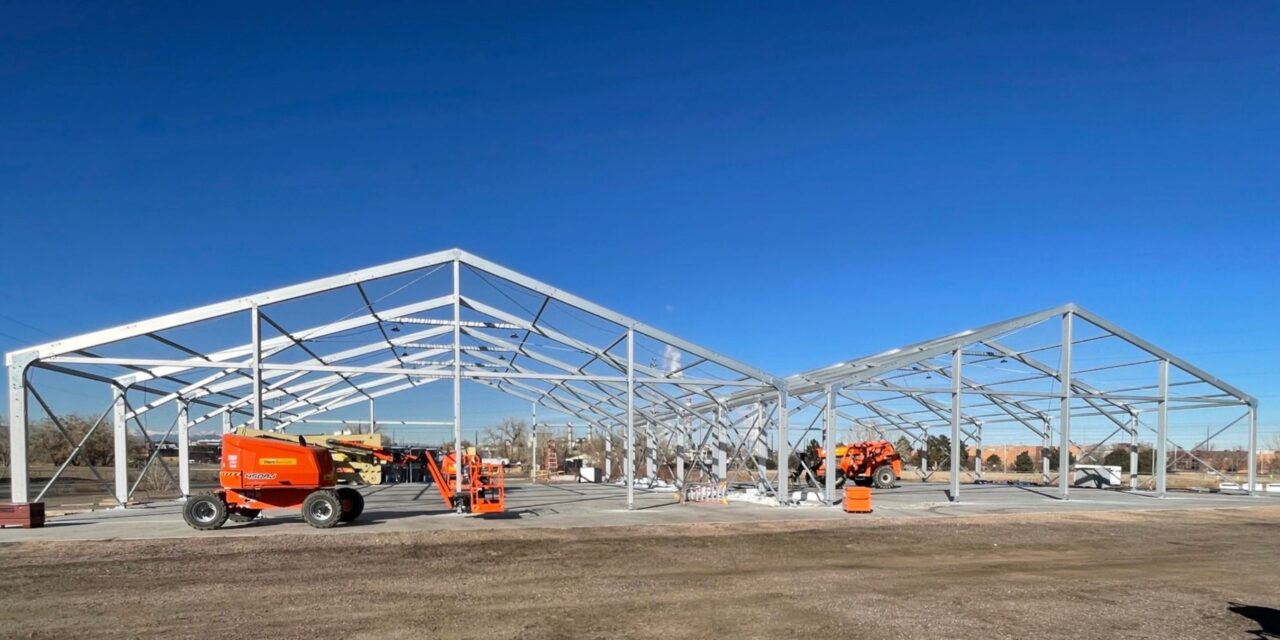Turnarounds and shutdowns in industries such as energy, utilities, and manufacturing are crucial for maintenance, upgrades, or expansion purposes. However, these projects can create considerable operational and financial challenges. In such situations, deciding between temporary industrial tents and traditional structures for ancillary operations becomes pivotal. The decision is further complicated by the fact that both temporary industrial tents and traditional structures have their own advantages and disadvantages.
This article provides a mini cost-benefit analysis of these two options to help decision-makers make informed choices.
Temporary Industrial Tents: Pros and Cons
Temporary industrial tents are popularly used as a cost-effective solution for covering large areas and offering temporary protection against the elements.
They provide a wide range of features that can prove beneficial to your project and its outcomes. However, it’s important to note both the advantages and the possible disadvantages that can come with temporary tent structures:
Advantages
1. Flexibility and speed: Temporary industrial tents can be set up quickly, offering immediate workspace solutions. These modular structures can be adjusted, expanded, or relocated according to the project’s needs.
2. Cost-effective: Usually costs less upfront than traditional buildings due to minimal construction and labor costs.
3. Minimal disruption: Installation tends to incur less disruption to usual operations, unlike constructing traditional structures.
Disadvantages
1. Limited lifespan: Although made with innovative materials, temporary industrial tents generally have a shorter lifespan compared to traditional structures.
2. Weather vulnerability: Extreme weather conditions may impact the functionality of temporary tents.
Traditional Structures: Pros and Cons
Traditional structures are commonly utilized as a long-term investment for covering expansive areas and providing a lasting shield against environmental factors.
They offer a multitude of advantages as well as some possible disadvantages, each crucial to keep in mind as you plan:
Advantages
1. Durability: Traditional structures, being built from concrete, steel, or brickwork, tend to be more durable and long-lasting. They can withstand harsh weather conditions and heavy usage better than tents.
2. Insulation: Traditional structures usually offer better insulation, making them more energy-efficient and comfortable in extreme climates.
Disadvantages
1. High initial investment: Traditional buildings require high initial expenditure on construction, labor, and materials.
2. Time-consuming: Building conventional structures often takes extended periods, compared to erecting temporary tents. This lengthy construction timeline could impact operational efficiency and productivity during turnarounds and shutdowns.
3. Limited flexibility: Traditional buildings offer minimal flexibility for layout changes or relocation, unlike temporary tent structures.
Project Highlights From Recent Turnarounds and Shutdowns
To illustrate the effectiveness of comprehensive planning and innovation with tent structures during a turnaround/shutdown, let’s look at some real-life examples from the Lodging Solutions and Industrial Tent Systems team:
In the end, the decision between temporary industrial tents and traditional structures hinges on your specific turnaround/shutdown needs, timeline, budget constraints, and long-term plans.
If speed, flexibility, and cost-effectiveness are crucial factors, or if the project timeline doesn’t justify a permanent structure, choosing temporary industrial tents would be most beneficial. Alternatively, if your operational plan is to use the structure for a much longer duration (more than three years) and can afford the initial investment, traditional structures may be an excellent long-term solution.
The key lies in identifying the project’s nature, evaluating both the costs and benefits, and ultimately, aligning the choice with the strategic plans of the project, ensuring your turnaround/shutdown runs most efficiently and cost-effectively.




